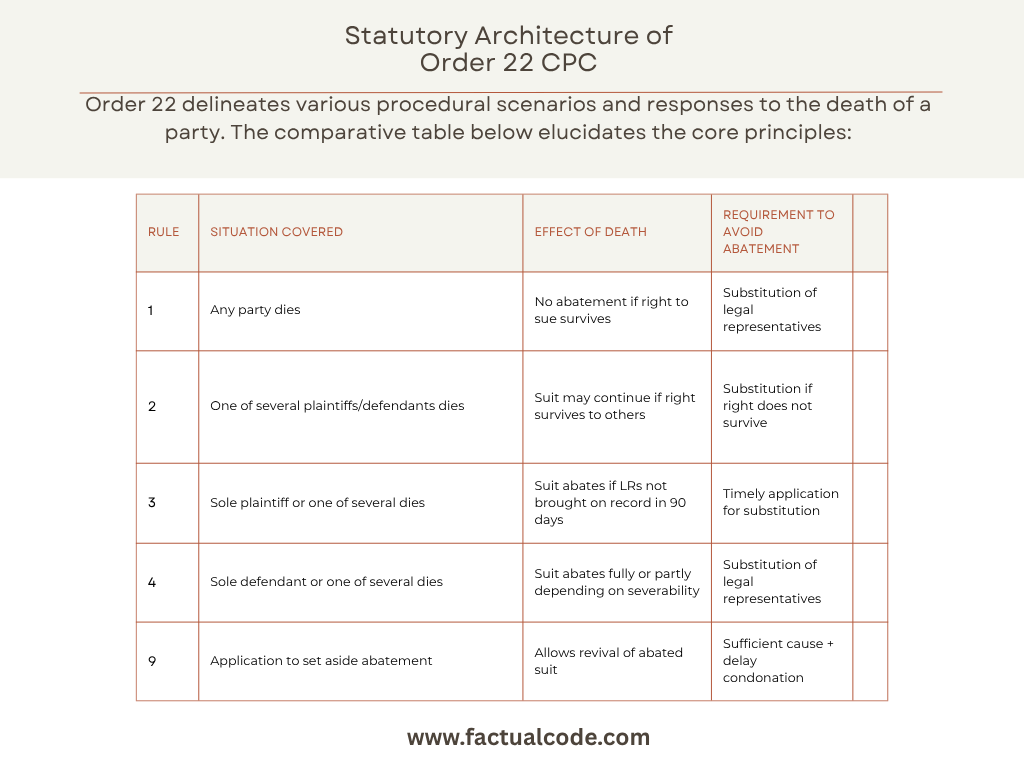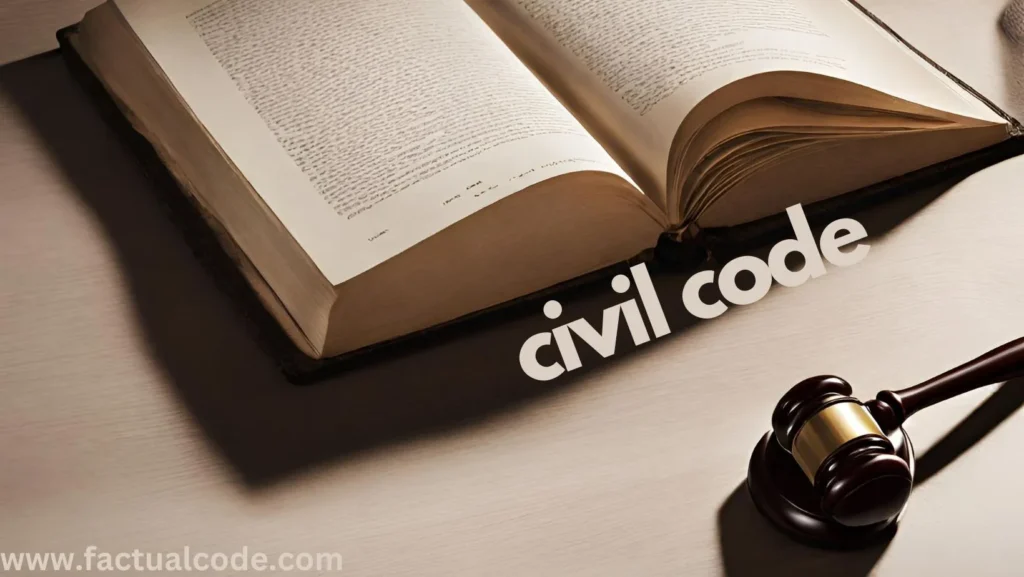Introduction
The procedural law in civil jurisprudence extends beyond the enforcement of substantive rights; it encompasses mechanisms to ensure the uninterrupted and fair adjudication of disputes. One critical scenario addressed under Order 22 of the Code of Civil Procedure, 1908 involves the death, marriage, or insolvency of a party during the pendency of a suit or appeal. A central question arises: does the death of a party result in the automatic termination of legal proceedings, or can such proceedings persist through the substitution of legal representatives?
Concept of Abatement in Civil Litigation
Abatement refers to the cessation or suspension of legal proceedings owing to the death of a party, where no timely steps are taken to bring the legal representatives on record. However, this outcome is not automatic in all circumstances—it is contingent upon whether the right to sue survives.
The doctrine “actio personalis moritur cum persona” (a personal cause of action dies with the person) is applicable only to specific cases.
If the cause of action is inherently survivable, proceedings can validly continue upon proper substitution of legal representatives.

Key Provisions under Order 22 CPC
Rule 1 – Survival of Right to Sue
If the right to sue survives the deceased party, the death does not cause abatement. The proceedings continue upon substitution of legal representatives.
Example: Disputes concerning property or contract generally survive the death of the party.
Rule 2 – Death Among Several Plaintiffs or Defendants
When multiple plaintiffs or defendants are involved:
If the right survives among the remaining parties, the suit continues.
If the right does not survive, legal heirs must be substituted.
Rule 3 – Death of a Sole or One of Several Plaintiffs
If a sole plaintiff dies, and the right survives, legal heirs must be substituted within 90 days.
Failure to do so leads to abatement of the entire suit.
Rule 4 – Death of a Sole or One of Several Defendants
Upon the death of a sole defendant, and where the right survives, legal heirs must be brought on record.
If multiple defendants are involved, and the deceased’s interest is severable, the suit proceeds against others.
In cases of joint interest, failure to substitute causes total abatement.
Rule 9 – Revival of Abated Proceedings
An application to set aside abatement can be made under Order 22 Rule 9(2).
The applicant must demonstrate sufficient cause for delay.
A concurrent application for condonation of delay under Section 5 of the Limitation Act, 1963 is required.
Judicial Pronouncements on Abatement
🏛 Bhagwan Swaroop v. Mool Chand, AIR 1983 SC 355
The Supreme Court emphasized that abatement is conditional upon whether the right to sue survives.
🏛 State of Punjab v. Nathu Ram, AIR 1962 SC 89
In cases of inseverable and joint interest, failure to bring legal representatives results in abatement of the entire appeal.
🏛 Rameshwar Prasad v. Shambehari Lal Jagannath, AIR 1963 SC 1901
The Court reiterated that procedural rules should not defeat justice; abatement may be set aside if justified.
Effect and Implications of Abatement
Abatement results in a procedural dismissal with respect to the deceased party, extinguishing rights to continue the suit unless remedied by due process. It can obstruct substantive justice and may preclude future litigation due to res judicata or limitation constraints. However, courts retain discretion to allow revival if sufficient cause is demonstrated.
Strategic and Practical Considerations
Legal representatives should be identified and substituted promptly.
The 90-day limitation period starts from the actual date of death.
Substitution is equally applicable to appeals, review, and execution proceedings.
Conclusion
Order 22 of the CPC underscores the critical balance between procedural regularity and substantive justice. Whether death leads to abatement hinges on the survivability of the cause of action. Substitution of legal representatives ensures the continuation of proceedings where appropriate. However, neglecting this procedural requirement invites abatement, which can materially impair legal rights. Judicial interpretations have consistently favored a liberal and justice-oriented approach in condoning delays and setting aside abatement where warranted.
Recommended Posts
Understand how civil suits abate due to the death of parties and the importance of legal representatives.
Explore how courts may amend or remove irrelevant issues during the trial process for better clarity.
Learn about garnishee proceedings for attachment of debtor’s property in the hands of a third party.
Get insights into interim reliefs and temporary orders issued to preserve justice during litigation.

